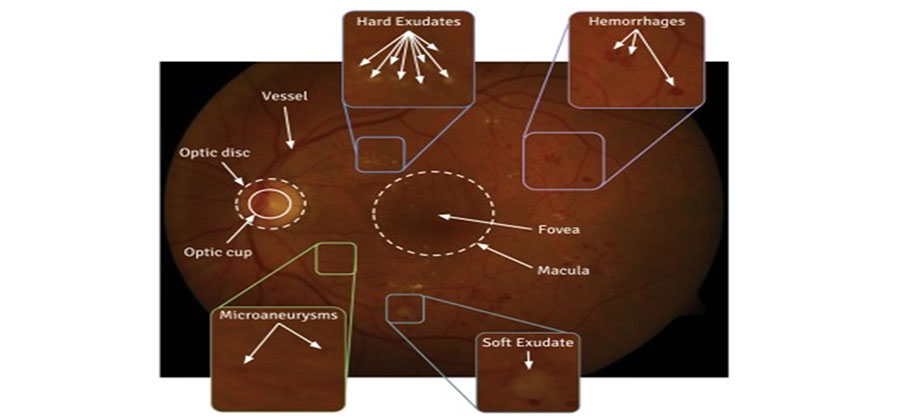


Indian Journal of Science and Technology
Year: 2020, Volume: 13, Issue: 20, Pages: 2030-2040
Original Article
Manoj Kumar Behera1 , Rutuparnna Mishra2 , Anshit Ransingh2 , Sujata Chakravarty2∗
1 Assistant Professor, Department of CSE, Centurion University of Technology & Management, 752050, Odisha, India
2 Department of CSE, Centurion University of Technology & Management, Odisha, India
∗Corresponding author:
Sujata Chakravarty
Department of CSE, Centurion University of Technology & Management, Odisha, India
Email: [email protected]
Received Date:18 April 2020, Accepted Date:14 May 2020, Published Date:19 June 2020
Objectives: This study proposes an automatic computer-aided screening system for prediction of Diabetic retinopathy (DR) by using image processing and machine learning techniques. Method: This proposed model can predict DR in three different stages, Normal, Non-Proliferative Diabetic retinopathy (NPDR) and Proliferative diabetic retinopathy (PDR) based on the features those are present in an input retinal fundus image using support Vector Machine(SVM). For better feature extraction each input retinal fundus image is pre-processed using three techniques; Image compression, Color layer separation and Contrast Limited Adaptive equalization (CLAHE). After pre-processing, the feature extraction is done using different techniques like Linear Spatial filtering, image thresholding and Top-hat operation for extraction of different features like micro aneurysms, blood vessels and exudates respectively. These extracted features are used for designing the classifier. Different kernels of SVM have been applied to the same set of feature and compared. Findings: Finally, Radial Basis Function(RBF) based Kernel SVM outperform others with an accuracy value of 97.2% using a test dataset of size 255 images. Novelty: As the model addresses three class classification of DR with a vast set of feature matrix, it performs well in detection of DR at its earlier state even with minimum feature set.
Keywords: Diabetic retinopathy; Non-proliferative diabetic retinopathy; Proliferative diabetic retinopathy; Support vector machine; Contrast limited adaptive equalization; Radial basis function
© 2020 Behera, Mishra, Ransingh, Chakravarty. This is an open access article distributed under the terms of the Creative Commons Attribution License, which permits unrestricted use, distribution, and reproduction in any medium, provided the original author and source are credited.
Published By Indian Society for Education and Environment (iSee)
Subscribe now for latest articles and news.